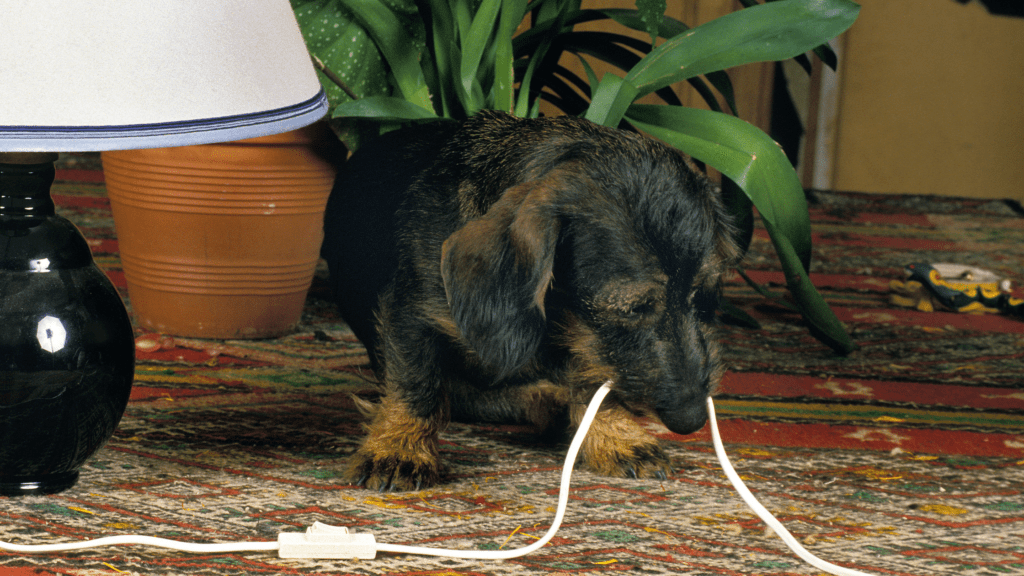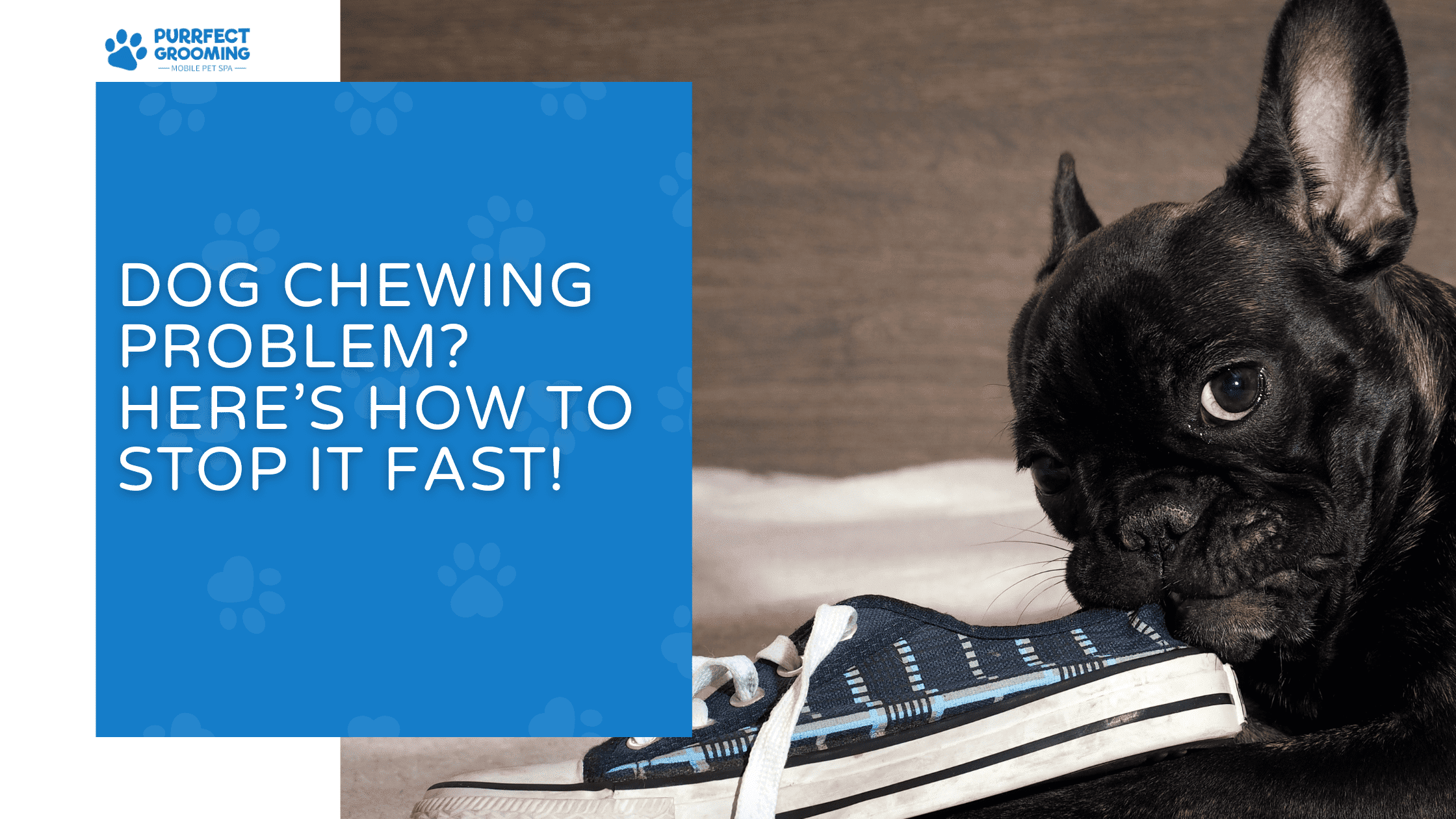Dog Chewing Problem? Here’s How to Stop It Fast!
Dogs are wonderful companions, but if you’ve ever come home to find your furniture destroyed, your shoes torn apart, or cables chewed through, you’re probably wondering: “Why does my dog chew on everything?” Chewing is a natural behavior in dogs, but when it becomes destructive, it can be frustrating and costly.
According to the American Veterinary Medical Association (AVMA), chewing is a fundamental instinct in dogs that helps maintain oral health and relieve anxiety. However, excessive or inappropriate chewing can be a sign of underlying issues such as boredom, stress, or lack of training.
This comprehensive guide will help you understand why dogs chew, how to stop a dog from chewing destructively, and the best methods for managing a puppy’s teething phase. By the end of this article, you’ll have actionable strategies to protect your belongings while ensuring your dog remains happy and healthy.
Why Do Dogs Chew?
Dogs chew for several reasons, and understanding the root cause is the first step in preventing destructive chewing. Let’s explore the most common reasons why dogs chew everything in sight.
1. Natural Instinct
Chewing is an innate behavior in dogs. It helps them explore their environment, exercise their jaws, and keep their teeth clean. Puppies and adult dogs alike enjoy chewing as part of their natural tendencies.
Key Points:
✔️ Dogs use their mouths to investigate new objects.
✔️ Chewing strengthens their jaws and cleans their teeth.
✔️ It is a natural stress reliever for dogs of all ages.
2. Teething in Puppies
Just like human babies, puppies go through a teething phase that can be painful. During this period, they chew to soothe their sore gums and to help their baby teeth fall out, making way for adult teeth.
Signs of Teething in Puppies:
🔹 Increased chewing on hard surfaces.
🔹 Swollen or red gums.
🔹 Drooling more than usual.
🔹 Reluctance to eat hard food.
How to Help a Teething Puppy:
- Provide soft chew toys designed for puppies.
- Offer frozen washcloths or ice cubes to soothe gum pain.
- Avoid giving them items that are too hard, as they can damage developing teeth.
3. Boredom & Excess Energy
A dog left alone with nothing to do will often turn to chewing as a form of entertainment. High-energy breeds, such as Border Collies and Labradors, require regular mental and physical stimulation to prevent destructive behaviors.
Signs of Boredom in Dogs:
✔️ Restlessness and pacing.
✔️ Excessive barking or whining.
✔️ Chewing on inappropriate objects.
✔️ Digging holes or scratching floors.
Solutions for Boredom-Induced Chewing:
- Increase daily exercise with walks, fetch, or tug-of-war.
- Introduce puzzle toys to engage their minds.
- Set up interactive play sessions with other dogs.
4. Anxiety & Stress
Dogs may chew excessively when they feel anxious or stressed. Separation anxiety is a common cause, especially in dogs that are left alone for long periods.
Signs of Anxiety-Related Chewing:
🔹 Destructive chewing happens mainly when you’re away.
🔹 Excessive licking or chewing of paws.
🔹 Pacing, whining, or drooling when left alone.
How to Reduce Anxiety-Induced Chewing:
- Leave a piece of your clothing with your scent.
- Use calming aids like pheromone diffusers.
- Create a safe and comfortable space with a cozy dog bed.
5. Seeking Attention
Some dogs chew on inappropriate items simply because it gets their owner’s attention. If you react strongly every time they chew something they shouldn’t, they might see it as a way to engage with you.
How to Correct Attention-Seeking Chewing:
✔️ Ignore unwanted behavior and redirect them to an appropriate chew toy.
✔️ Reward good chewing behavior with praise or treats.
✔️ Ensure they receive enough interaction and playtime daily.

How to Stop a Dog from Chewing Everything
Stopping destructive chewing requires a combination of training, redirection, and preventative measures. Here’s a step-by-step approach to managing your dog’s chewing behavior.
1. Training Techniques
Training is the foundation of correcting chewing behavior. Teaching your dog commands like “Leave it” and “Drop it” can be highly effective.
Steps to Teach “Leave It” Command:
1️⃣ Hold a treat in your closed hand and let your dog sniff it.
2️⃣ When they try to get it, say “Leave it” and close your hand.
3️⃣ Once they stop trying, reward them with a different treat.
4️⃣ Repeat until they respond consistently.
2. Providing Chew Toys
Offering a variety of chew toys can satisfy your dog’s natural urge to chew while protecting your belongings.
Best Types of Chew Toys for Dogs:
| Type of Chew Toy | Best For | Examples |
| Rubber Chews | Aggressive Chewers | KONG, Nylabone |
| Rope Toys | Tugging & Chewing | Mammoth Rope |
| Edible Chews | Long-Lasting | Bully Sticks, Antlers |
3. Exercise & Mental Stimulation
Dogs that get enough exercise are less likely to engage in destructive behaviors. A tired dog is a happy dog!
✔️ Walk your dog for at least 30–60 minutes daily.
✔️ Use interactive food puzzles to keep their brain engaged.
✔️ Play games like hide-and-seek or scent tracking.
4. Using Deterrent Sprays
Dogs dislike bitter tastes, so using a deterrent spray on furniture and other objects can help discourage chewing.
Best Natural Anti-Chew Sprays:
- Apple cider vinegar mixed with water.
- Lemon juice with a pinch of cayenne pepper.
- Commercial bitter sprays like Grannick’s Bitter Apple.
5. Crate Training & Safe Spaces
Crates are not a punishment—they provide a safe, chew-free environment when you can’t supervise your dog.
✔️ Introduce the crate gradually with positive reinforcement.
✔️ Make it comfortable with a soft bed and favorite toys.
✔️ Never use the crate as a form of punishment.
Conclusion
Chewing is a natural and necessary behavior for dogs, but when it becomes destructive, it can be a sign of boredom, anxiety, or lack of proper training. By understanding why dogs chew and implementing effective training techniques, chew toys, and preventative measures, you can stop your dog from chewing on everything.
With patience and consistency, your furry friend will learn what’s acceptable to chew—and what’s not. Happy training! 🐶✨
Pro Tip for Dog Owners
“Preventing chewing is easier than correcting it! Always supervise young dogs, provide engaging chew toys, and reward positive behavior. The key to success is consistency and patience.”
FAQs
1. What is the best way to stop my dog from chewing on furniture?
Use deterrent sprays, provide alternative chew toys, and ensure they get enough physical and mental exercise.
2. How long does the puppy teething phase last?
Puppy teething starts around 3–4 weeks and lasts until 6 months old.
3. Why does my dog chew even when I provide toys?
Your dog may need more exercise, attention, or different types of chew toys to stay engaged.
4. Is chewing a sign of anxiety in dogs?
Yes, excessive chewing, especially when left alone, can indicate separation anxiety.
5. Can I train an older dog to stop chewing?
Absolutely! Training and redirection work for dogs of any age—it just takes patience and consistency.
